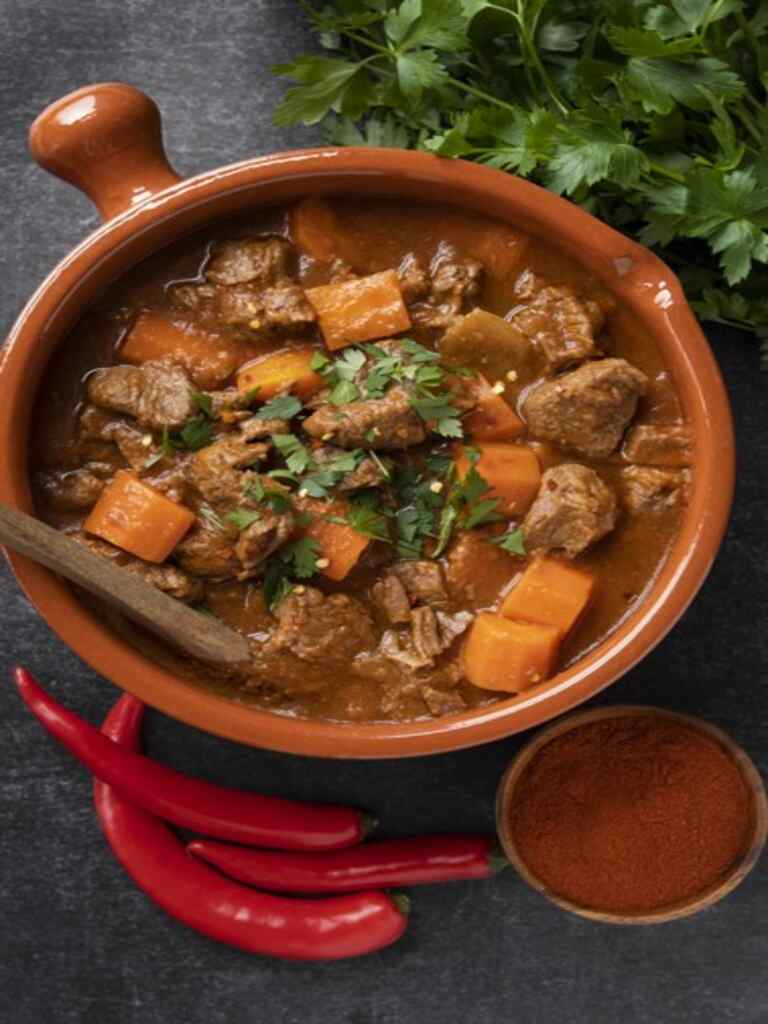
Pepperpot is Guyana’s national dish and one of the country’s most cherished culinary traditions. It is a slow-cooked meat stew, typically made with beef, pork, or mutton, and simmered with spices like cinnamon, cloves, hot peppers, and most importantly, cassareep—a thick, dark sauce made from the juice of cassava root.
Cassareep not only gives the dish its unique bittersweet flavor but also acts as a natural preservative, allowing Pepperpot to last for several days without refrigeration.
Read Also: Caldo de Mancarra: Guinea-Bissau’s Creamy Peanut Stew with Chicken
Pepperpot is Guyana’s national dish and one of the country’s most cherished culinary traditions. It is a slow-cooked meat stew, typically made with beef, pork, or mutton, and simmered with spices like cinnamon, cloves, hot peppers, and most importantly, cassareep—a thick, dark sauce made from the juice of cassava root.
Pepperpot has deep roots in the indigenous Amerindian communities of Guyana, who first created it as a practical and flavorful way to preserve meat using cassareep. Over time, as African, European, and East Indian influences shaped Guyana’s culinary landscape, the dish evolved into a festive centerpiece.
Today, Pepperpot is especially associated with Christmas and special gatherings, where families prepare it in large pots to be shared over several days, often served with homemade bread or rice.
Beyond being just a meal, Pepperpot represents togetherness, heritage, and the blend of traditions that define Guyanese identity.

Read Also: Zucchini Fries with Roasted Garlic Aioli and Sriracha Mayo
This dish is a story simmered in tradition, resilience, and celebration. From its indigenous roots to its place on Christmas tables today, every spoonful carries history and heritage. Pepperpot remains a timeless reminder of Guyana’s rich cultural tapestry.